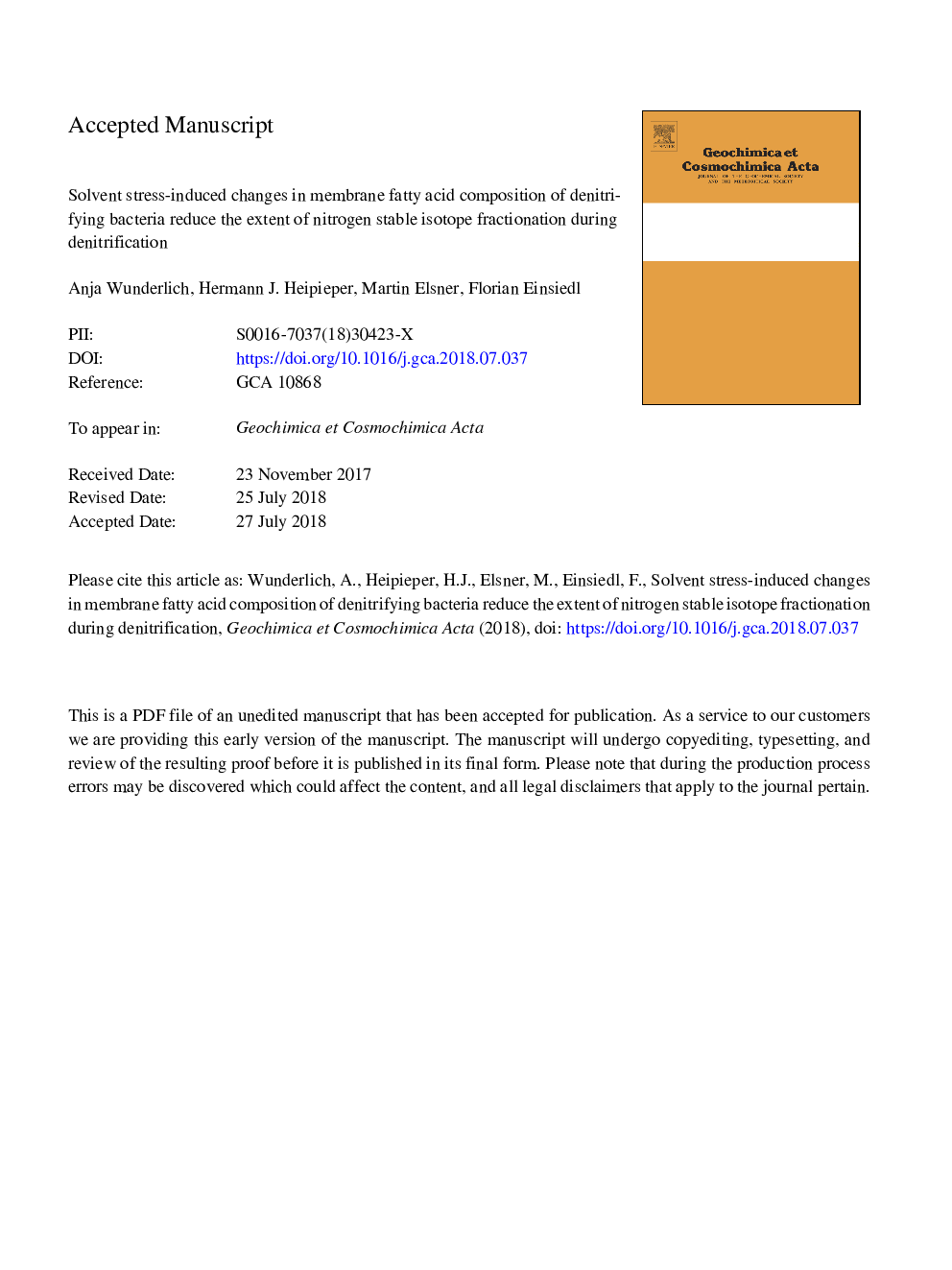| Article ID | Journal | Published Year | Pages | File Type |
|---|---|---|---|---|
| 8910576 | Geochimica et Cosmochimica Acta | 2018 | 22 Pages |
Abstract
Microcosm experiments with the well-studied denitrifier Thaurera aromatica show a link between a higher maximum membrane concentration (MMC) of the toxic organic solvents 1-octanol and 4-chlorophenol and a higher degree of saturation (DoS) of the fatty acids in the cell membrane. This coincides with less pronounced stable isotope fractionation during denitrification. We suggest that the change in cell membrane fluidity and the cell's stress response leads to a decrease in nitrate transport across the cell membrane and/or an increase in the relative ratio of respiratory nitrate reduction rate versus efflux of unreacted nitrate. Both models show that the apparent kinetic isotope effect (AKIE) approach unity and thus reduce the extent of the resulting stable isotope enrichment factor ε15N-NO3â in dissolved nitrate during denitrification, as experimentally and mathematically shown in this study. This may lead to an underestimation of nitrate reduction determined by nitrate stable isotope analysis in aquatic habitats where various types of stresses may affect the physiology of the driving microorganisms.
Related Topics
Physical Sciences and Engineering
Earth and Planetary Sciences
Geochemistry and Petrology
Authors
Anja Wunderlich, Hermann J. Heipieper, Martin Elsner, Florian Einsiedl,
